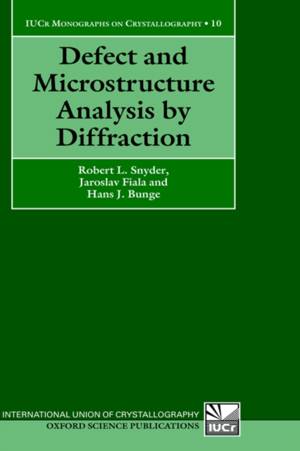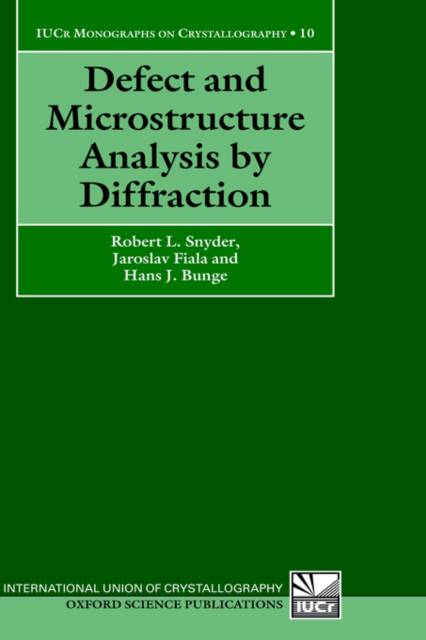
- Afhalen na 1 uur in een winkel met voorraad
- Gratis thuislevering in België vanaf € 30
- Ruim aanbod met 7 miljoen producten
- Afhalen na 1 uur in een winkel met voorraad
- Gratis thuislevering in België vanaf € 30
- Ruim aanbod met 7 miljoen producten
Zoeken
€ 668,95
+ 1337 punten
Omschrijving
Defect and Microstructure Analysis by Diffraction looks at a key aspect of state-of-the-art methods for analyzing the actual structure of materials. Diffraction analysis is typically based on idealized crystals. The impurities and irregularities that work themselves into virtually all crystal structures, however, cause diffraction peak profiles to broaden and sometimes become asymmetric, making the data difficult to interpret. More powerful methods are undoing this effect, using the discrepancies themselves to describe microstructure of the material with unprecedented accuracy. These techniques in turn play a key role in many of the evolving techniques for microstructure analysis from diffraction patterns such as micro-strain, crystallite size, macro-strain and preferred orientation analysis. This book provides a comprehensive analysis of the fundamental theory and techniques for microstructure analysis from diffraction patterns and summarizes the current state of the art. It lays the foundation for the next and last major development in this field: the extraction of the full information in a powder pattern by the simulation of the full experimental pattern. The goal of this research is to extract all of the information locked in the powder diffraction pattern including the types and densities of stacking faults, the strain field produced by each, the anisotropic crystallite size and orientation, along with the size and strain distributions of each phase in a specimen.
Specificaties
Betrokkenen
- Auteur(s):
- Uitgeverij:
Inhoud
- Aantal bladzijden:
- 808
- Taal:
- Engels
- Reeks:
- Reeksnummer:
- nr. 10
Eigenschappen
- Productcode (EAN):
- 9780198501893
- Verschijningsdatum:
- 16/03/2000
- Uitvoering:
- Hardcover
- Formaat:
- Genaaid
- Afmetingen:
- 156 mm x 234 mm
- Gewicht:
- 1297 g

Alleen bij Standaard Boekhandel
+ 1337 punten op je klantenkaart van Standaard Boekhandel
Beoordelingen
We publiceren alleen reviews die voldoen aan de voorwaarden voor reviews. Bekijk onze voorwaarden voor reviews.











